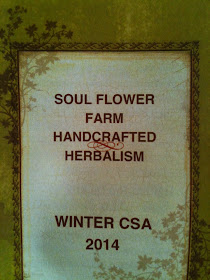Thank you Cocoa!
From May 2013 to February 2014, a cycle is complete. Ginger's first calf, little Cocoa, was born here and lived an easy life. He was able to grow fat on his mom's milk for six months then enjoy any array of alfalfa, vegis, pumpkins, and grain. He was able to run and jump, sniff and investigate like any calf should. He slept most of the day like babies do and enjoyed many a scratch behind the ears.
Then when he started to grow up he was even able to express some of his manhood and bully us around a bit. (The poor goats got bullied around alot!) And at a certain point when he was eating the same amount as his mom and when he was getting just too big to handle safely (with those horns of his), it was time for him to go.
We knew from the start that Cocoa's destiny would be to fill the freezer. Since we don't eat meat it would not be ours. And when all was said and done the whole scenario could not have worked out better. A friend purchased him, picked him up in her trailer, brought him to the slaughter house and then the butcher.
This friend of ours happens to be extremely particular about where her meat comes from and feels it's important to face the animals she will eat. So she sat with Cocoa to the end and watched the complete process to make sure it was as humane a possible. She was even kind enough to bring us back some of the innards for our compost pile so a part of Cocoa could be incorporated into the soil where he was born.
We saved Cocoa's beautiful hide for salting and preserving as well. We say farewell to Cocoa who gave us our first amazing experiences with calf rearing. He was sweet, gentle and of course very stubborn. We are all grateful for the gifts he has given us.
Every part of Cocoa was used. He was split between four families, meaning he will feed and nourish fifteen people. Just in case any of you are considering buying a whole animal for meat to share or just for your own family, here is a cost comparison analysis of the beef purchase from the buyer, I thought it was interesting to see the breakdown. Cocoa was eight months old and approximately 700 lbs.
Compared to a 6 month subscription from Marin Sun Farms
(adjusted for weight differences)
more steak--102%
less roasts--32%
less hamburger--15%
more bones--100%
more offal--100%
| |||
| cost savings of meat per pound (excluding offal and bones)--36% total cost savings--33% final cost per pound of meat (excluding offal and bones)--$5.20 | |||
pounds of meat each + 1/4 of the bones and various cuts of offal--46.26
And now, all is quiet here on the farm. Are you are curious about Ginger?? We have been watching her closely. She seems to have had her few days of wondering and most likely mourning but with all the green grass coming up it's business as usual.
















